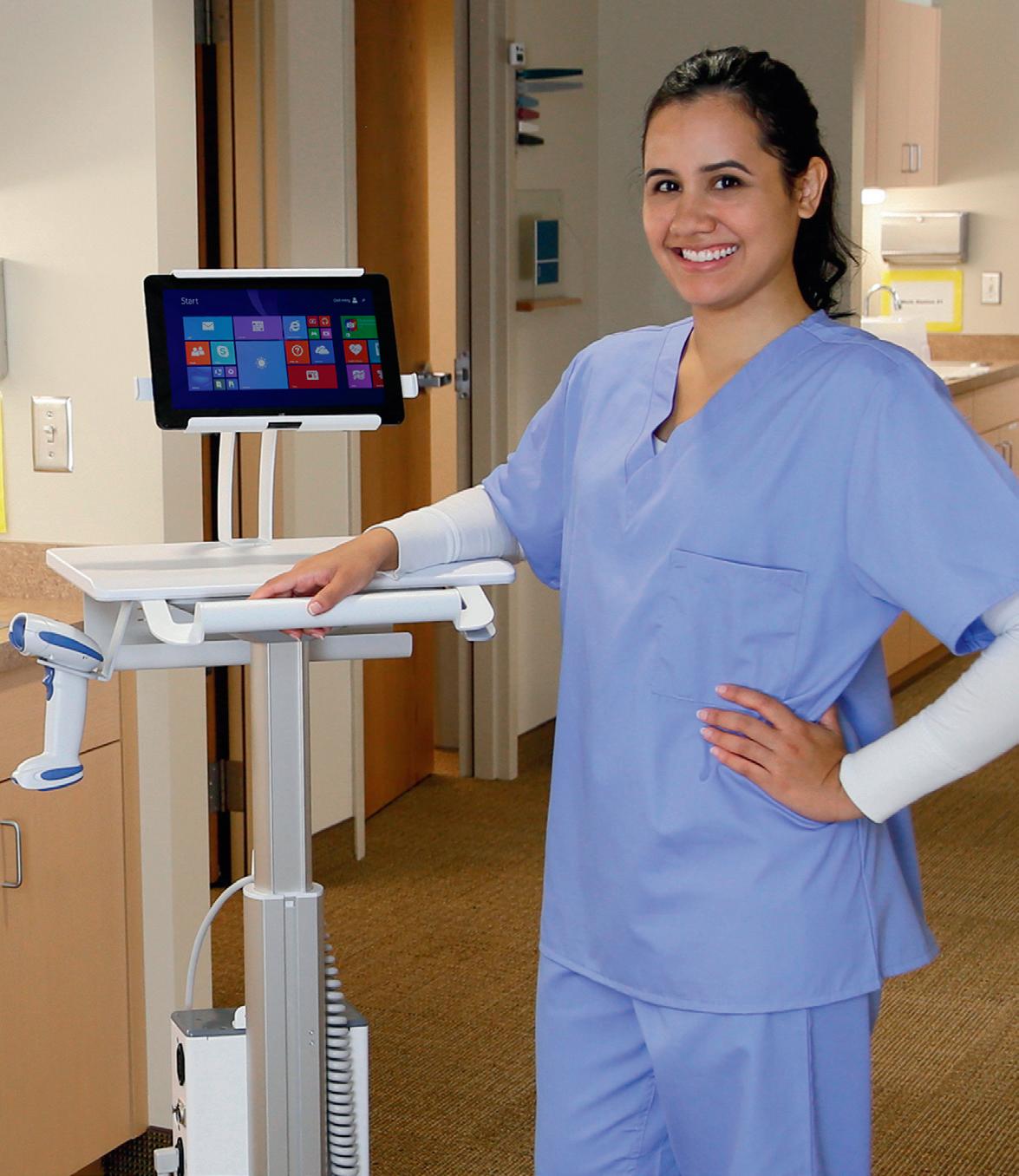
6 minute read
Alzheimer’s: a chance to change course
Healthy people over 65 with a high level of a certain blood biomarker are 35 times more likely to transition to mild cognitive impairment or Alzheimer’s, according to new collaborative research from Macquarie University and the CSIRO.
The biomarket can appear years before the onset of dementia symptoms — and there are hopes this could be early enough for people to make lifestyle changes to help head off the disease.
The human body has a number of ways of breaking down and producing the compounds, or metabolites, necessary to keep it functioning. The kynurenine pathway (KP) is one of these ways, producing metabolites that serve functions including protecting the neurological system and coordinating the immune response.
NEUROTOXIC METABOLITES
While some metabolites are protective, others can become toxic in high enough amounts. When it is not functioning properly, the KP produces increased levels of neurotoxic metabolites, which can ultimately lead to the death of neurons, the cells that transmit messages in the brain.
Dysfunction in the KP has previously been found to be caused by chronic inflammation in the body, and associated with problems ranging from Alzheimer’s and multiple sclerosis to schizophrenia and bipolar disorder.
Dr David Lovejoy from Macquarie Medical School said his team looked at samples from 239 people with an average age of 75, 166 of whom went on to develop Alzheimer’s. The samples were taken every 18 months as part of a long-term study of healthy older Australians.
“We found someone with increased levels of 3-HAA is 35 times more likely to progress to Alzheimer’s than someone with normal levels,” he said.
“This is the first time higher 3-HAA levels have been shown to be an early warning sign of the disease.
“In the past, 3-HAA has been observed to actually decrease after a diagnosis of dementia, but nobody has ever looked back to measure it in the lead-up.
“So, we were surprised to see increased 3-HAA levels strongly predicting risk of developing MCI that leads to a diagnosis of dementia.



iStock.com/Makhbubakhon Ismatova
“Increased levels of the 3-HAA metabolite have been shown to impair the immunological response to the build-up of amyloid in the brain, one of the key ‘bad-actors’ in the development of Alzheimer’s.”
PREVENTATIVE MEASURES
At this early stage, the process of testing for 3-HAA is at laboratory stage, but there is every reason to believe that it will be possible to develop a rapid blood test in the future.
“In theory, if you found your levels were high, you would get a brain scan to determine whether there was also a build-up of amyloid plaques, which is an indicator of Alzheimer’s, and begin taking preventative measures,” Lovejoy said.
“We don’t know yet whether increased levels of 3-HAA leading up to dementia can be reversed. That is something that needs more research, but there are so many exciting possibilities here.
“There would also be the potential to use such a test to check whether new Alzheimer’s therapies were working.
“In theory if levels of 3-HAA began to fall, it might indicate that the treatment was having the desired effect.”
LIFESTYLE CHANGES
Alzheimer’s is one of a number of diseases — including heart disease, stroke and certain types of cancer — that count inflammation in the body one of their root causes.
Acute inflammation is healthy, aiding in the recovery process after injury or illness. Chronic inflammation, on the other hand, is detrimental to many aspects of our health.
In the case of Alzheimer’s, inflammation of the neurological system is one of the key culprits, as it increases the toxicity of amyloids and tau proteins, which build up in the brain.
Fortunately, Lovejoy said there are lifestyle changes anybody can make at any age that help reduce chronic inflammation: • Follow a Mediterranean diet, which is low in red meat and processed foods and rich in vegetables, legumes and beans, nuts, fish and healthy oils such as olive oil. Include as many bright-coloured foods as possible, such as leafy greens and red berries. • Get at least 30 minutes of cardiovascular exercise every day, such as walking, swimming or cycling. To be beneficial, cardiovascular exercise needs to raise your heart rate, but there’s no need to do anything too strenuous, like running. • Reduce your alcohol consumption. The current Australian advice is to drink no more than four standard drinks a day, and no more than 10 drinks a week.
“These are all the things that also contribute to maintaining a healthy weight,” Lovejoy said.
“They’re changes we know we should make but might struggle to put into place.
“If you do these things, you’ll reduce your risk of a number of serious diseases, and you’ll have a sweeter life as you get older.”
Lovejoy is a researcher in Macquarie Medical School and the Macquarie University Centre for Motor Neurone Disease.
This study was funded by the National Health Medical Research Council. n
SPONSORED CONTENT VIRTUAL VISITORS: REDUCE ISOLATION AND INCREASE CONNECTIONS WITH TECHNOLOGY
The COVID-19 pandemic resulted in signifi cant loneliness for many aged care residents and stress for families. As restrictions ease and vaccination rates increase, older generations remain the most vulnerable to COVID-19 and many other infections, leading to fewer visitors and continued health concerns.
Even prior to the pandemic, many aged care residents experienced loneliness, with up to 40 percent of individuals never receiving a visitor, according to Ken Wyatt, the former minister for aged care. Loneliness and social isolation have been linked to poorer health outcomes. Social isolation in older adults correlates to a higher risk for cardiovascular, autoimmune, neurocognitive and mental health problems like depression and anxiety, according to The Lancet.
While a hug or holding a loved one’s hand is irreplaceable, the ability to see a familiar face during a conversation may help bridge the gap for aged care residents during uncertain times.
Fostering connections with technology
Smartphones, tablets and web cameras represent convenient ways for aged care residents to connect with visitors virtually through apps and other platforms. While many older adults are tech savvy and can easily navigate the latest technology, others struggle to adapt to these digital tools.
Many residents have diffi culty holding small devices or positioning them at a comfortable height for virtual conversations. Some solutions for positioning technology are cumbersome and take up valuable real estate in already crowded areas that must also accommodate medical equipment.
How to support virtual visitors
Many carts, tables and stands are available to support technology for virtual patient-family interactions. When considering options for your organisation, prioritise these features to support the best experience for aged care residents: • Height adjustability: Easy adjustment ensures residents can position equipment at the proper ergonomic height for comfort and improved accessibility. • Infection control: Open architecture designs with thoughtful cable management are often easier to clean, which promotes more frequent wipe-downs. • Mobility: Lightweight carts and stands can roll anywhere for virtual conversations — the bedside, garden, visitor rooms and more, which gives choice and fl exibility. • Compact footprint: A small footprint allows carts, tables or stands to fi t neatly in your facility without adding clutter or competing with important medical equipment. • Quality: Look for professional-grade options that are built to last with documented cycle testing and competitive warranties that give you confi dence in its safety and your investment. • Versatility: Adaptable solutions can be used for virtual visitors, as well as telehealth consultations with a variety of specialists.
Ergotron’s broad portfolio of professionalgrade healthcare solutions enable aged care residents to connect with virtual visitors while supporting their physical and mental well-being. Contact Robin Burgess +61 421 080 303 or Robin.Burgess@ergotron.com to learn more.
View the Ergotron portfolio at www.ergotron. com/healthcare.

Disclaimer: Camera, monitor and other equipment sold separately. Ergotron does not manufacture, sell or endorse video accessories such as cameras, monitors or tablets.






